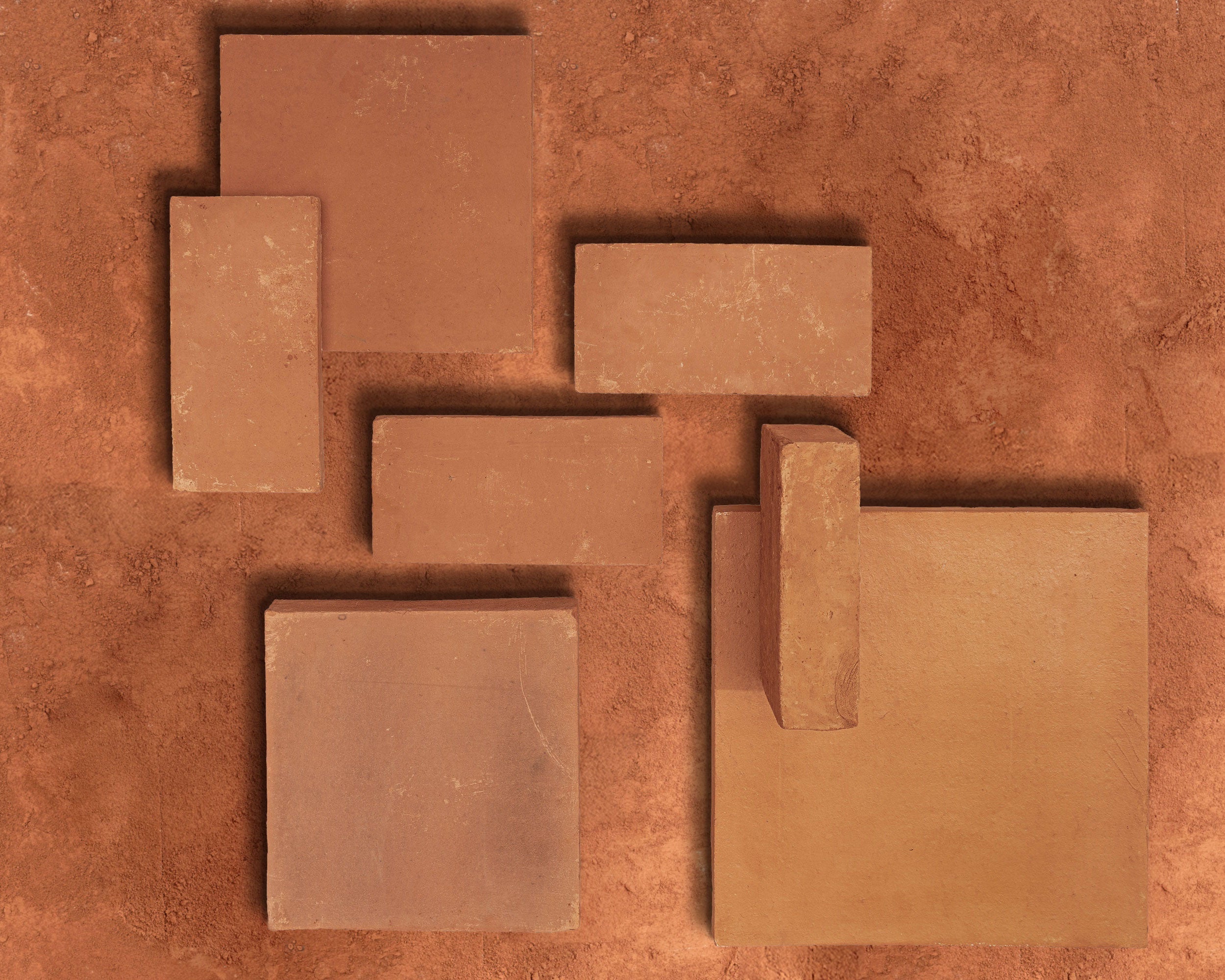An easy guide to creating a sustainable and eco-friendly walkway
By Clay Imports
In a world filled with concrete surfaces, our homes and cities often lack breathable ground. Permeable pavers offer a beautiful, functional alternative to solid slabs by creating usable outdoor floor space while still allowing rainwater to return to the earth. Unlike concrete patios, driveways, or traditional solid pavers, permeable pavers reduce runoff, erosion, and flooded spots in your yard.
Many states also consider impermeable surface percentage when calculating property taxes. Choosing permeable pavers helps you add livable outdoor area without increasing your impermeable footprint.
Outdoor tile vs pavers vs permeable pavers: What’s the difference?
When designing an outdoor space, it’s important to choose a material that supports your style and stands up to weather. Here’s a quick overview of the most common options.
Tile
Tile is a thin, refined, kiln-fired product made from natural materials. It is durable, water resistant, and often glazed or polished. Tile installations require a solid foundation and grout. Tile is ideal for adding a design element to existing slabs.
Terracotta pavers
Terracotta pavers are thicker than tile and function like bricks. They can be sand set or mortared in both exterior and interior applications. These pavers are dense, strong, and suitable for patios, walkways, and driveways.
Permeable pavers
Permeable terracotta pavers are designed with intentional perforations that allow water to flow directly into the soil below. They are installed on a base of soil or sand and can be filled with gravel, soil, grass, or plants.
Important: Permeable pavers are not suitable for installation on top of concrete for driveways. They should be installed on a permeable, prepared ground base.
Why choose permeable pavers?
You may be wondering how permeable pavers differ from impermeable ones.
Permeable pavers
• Allow water to drain through the perforations
• Help reduce runoff and erosion
• Support plant growth in between the openings
• Are laid over soil or sand
• Can be filled with gravel, soil, seeds, or groundcover
• Provide a walkable, eco-friendly outdoor surface
Impermeable pavers
• Are solid terracotta, concrete, or cement mixes
• Do not allow water to drain through
• Are often mortared and sealed, creating a waterproof layer
• Can contribute to standing water and runoff
Like all natural terracotta products, permeable pavers feature color and texture variations. These variations are expected and part of their handmade appeal. We highly recommend ordering samples before committing to a full project.
We love permeable pavers so much that we installed them at our Clay SMA Studio.
How to Install Permeable Pavers
A simple guide for DIYers
While these steps reflect how we installed our permeable pavers, every project is different. Always consult with a contractor if you are unsure. Think of this as a helpful starting point.

Step-by-Step Installation
1. Confirm your measurements
Measure your space, then measure again. Double checking ensures accurate quantities and layout.
2. Choose the right paver
Not all blocks work as permeable pavers. Select designated permeable items from the Clay Imports collection.

A note on structure: to keep your blocks from moving over time, we recommend using something structural such as a wall, landscaping metal edges or even using permeable pavers on their sides.
3. Finalize your design and order quantity
Plan your layout, determine if cuts are needed, and include overage for breakage. We highly encourage ordering samples first to confirm design and layout.
4. Plan for structure
To keep the pavers from shifting over time, use a structural boundary like a low wall, steel edging, or even permeable pavers installed vertically as a border.

5. Prepare the ground
Clear the area, then level and lightly compact the soil. Do not use an impermeable membrane. If your project requires a membrane, choose a permeable one.
Prepare the base so your pavers sit flush or slightly above the existing ground level.
6. Ensure the soil is even
You want it stable but not over-compacted. The goal is a supportive, permeable base.


7. Install the pavers
Place each paver snugly against the next to minimize movement. Check level as you go and make sure each row aligns properly.
8. Fill the perforations
Once installed, fill the openings with soil, gravel, grass seed, flowers, or even small succulents. This step brings the permeability and visual charm to life.
Maintaining Permeable Pavers
Permeable pavers still benefit from regular care. Since they are natural terracotta, we recommend exploring our Clay Care products. These cleaners and maintenance items are tested with our materials to help preserve beauty, longevity, and performance.
Even Though they are permeable, that doesn’t mean you should leave them unattended; as tile experts, we truly understand the importance of taking good care of your tiles. That's why we recommend taking a look at our Clay Care products. These maintenance items have been carefully tested with our products, and they are designed to preserve your tiles' beauty, ensuring their longevity and durability.
Building with Clay Imports
We’ve been in the tile game for many, many years and we want to share everything we’ve learned with you! Keep an eye on our blog section, so you can learn more about everything we’ve created and give you the best advice for your projects. You can see how we install a kitchen backsplash here and learn more about the projects we have done in our Clay SMA Studio, like this breeze block wall. And remember, if you have any questions or require more information, reach out to us at contact@clayimports.com







 Share
Share
 Pin it
Pin it














